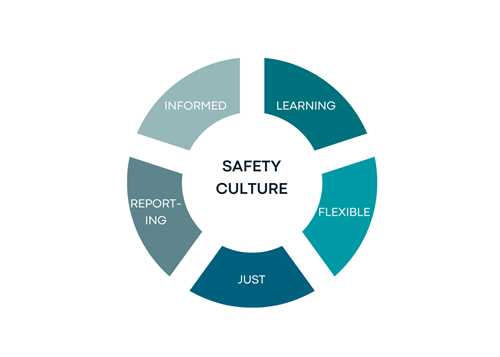Safety Culture.
Have you considered that the words we use daily to communicate with colleagues about safety could be doing more harm than good?
More than just a means of communication, words remind us what we care about and believe in. Non-verbal cues such as body language are also important communication tools, but too often we ignore the impact of the words we use.
In my experience of working with many aviation organisations, there is a disconnect between the written word and the spoken language used by management and employees when talking about safety. Company documents contain words and phrases such as ‘blame–free’, ‘management commitment towards safety’, ‘staff are trained to conduct their work safely’, ‘conducting investigations to learn from safety events’ and ‘people will not be punished for making mistakes’. The words used here are positive, demonstrating commitment, with the aim of improving safety. These words encourage a shared set of behaviours and attitudes which will foster a positive safety culture within the organisation.

However, when employees are conducting day-to-day operations, so often, the language used changes. Employees are heard saying ‘the individual was investigated’, or when completing routine activities rather than following the procedures that were designed for the task: ‘I made that decision based on my experience and judgement’. Management are heard saying that ‘‘the individual was retrained‘ when talking about the outcome of an investigation in their fair and just culture. Even safety professionals can be heard uttering words such as ‘the root cause was the ATCO/Engineer failing to…‘.
Irrespective of the routine safety activity underway, the words used to communicate safety imply blame and echo a negative attitude. It is extremely difficult to improve the safety culture, irrespective of how many activities and actions are conducted, if communication between staff is negative.
How can you identify whether the words that people use are impeding a positive safety culture? Listen to and observe your employees. Hear the way management discusses safety in meetings. Look over past safety culture surveys, even look through your safety performance. Are any of the words and phrases written above used? Is your safety performance poor despite the number of initiatives you have introduced?
What steps can you take to improve the language used? The organisation first needs to identify and acknowledge that the words people use may be contributing to undesirable safety behaviours and attitudes, which in turn are hindering the progression of a positive safety culture. Management safety behaviour briefings are a good way to ensure that all leaders and managers share a common understanding of the importance of language and behaviour, and how it contributes towards the safety culture. A top-down educational approach will ensure that more consistent words are communicated.
Organisations are spending considerable time and money in introducing and promoting a positive safety culture. It’s time to pay attention to the spoken word, or risk undermining this.
